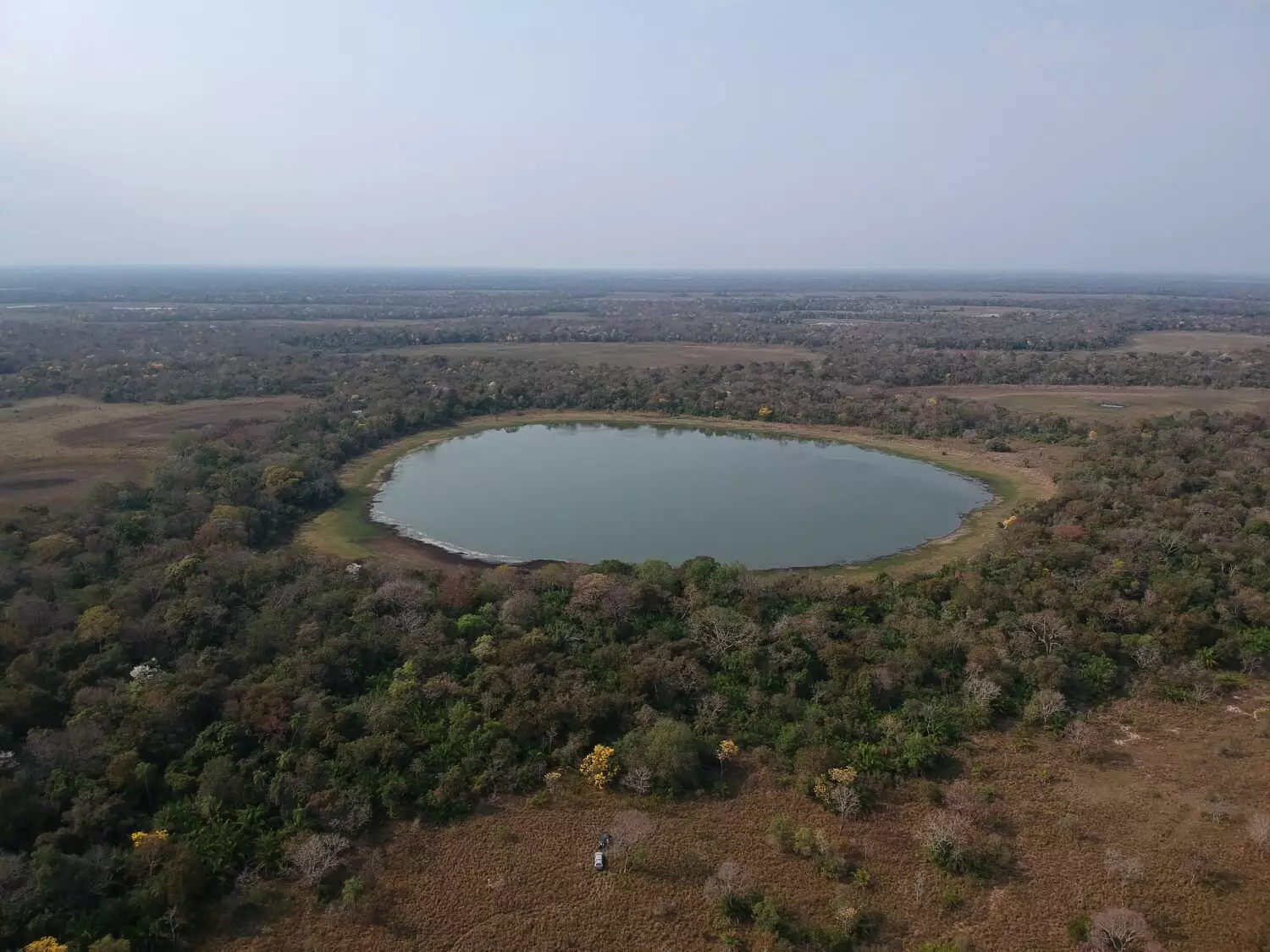The Pantanal, recognized as the world’s largest tropical wetland, spans an impressive area of 153,000 square kilometers, primarily located in southwestern Brazil. Its distinctive seasonal patterns, marked by alternating dry and rainy periods, pose a unique ecological environment. What is less appreciated, however, are the soda lakes within this matrix—shallow, alkaline bodies of water that harbor complex microbial communities capable of influencing greenhouse gas emissions significantly. While freshwater lakes have garnered considerable attention regarding emissions, soda lakes remain a relatively underexplored aspect of environmental science.
Recent research initiatives from the University of São Paulo (USP) and the Federal University of São Carlos (UFSCar) have sought to unravel the biological intricacies governing greenhouse gas emissions from these soda lakes. The study emphasizes the critical need for further investigation in this area, proposing that the composition and functionality of microbial communities are paramount to understanding and predicting these emissions amidst changing environmental conditions.
The study categorizes Pantanal’s soda lakes into three distinct types based on their water chemistry and associated microbial communities: eutrophic turbid (ET), oligotrophic turbid (OT), and clear vegetated oligotrophic (CVO). Each category plays a different role in methane emissions. Notably, ET lakes emerged as significant contributors to methane due to factors like cyanobacterial blooms and decomposing organic matter. The interplay between these elements facilitates a robust microbial breakdown of organic material, leading to methane production, particularly during drought periods when evaporation rates increase.
Conversely, CVO lakes also emit methane, albeit at lower levels. OT lakes, defined by their unique chemistry which includes high sulfate concentrations, surprisingly do not yield methane emissions; however, they do release carbon dioxide (CO2) and nitrous oxide (N2O). These findings illustrate the variability and complexity of biological processes that dictate greenhouse gas dynamics in soda lakes.
The Pantanal has been increasingly stressed by climate change, most notably through instances of extreme drought and an alarming rise in wildfires. Statistical reports reveal almost 22,116 wildfires in 2020 alone, an unprecedented figure, while the first eight months of 2024 have already recorded 9,167 incidents, surpassing those of previous years. Such drastic environmental shifts have direct ramifications for the soda lakes, leading researchers to observe significant alterations in the water’s chemical profile and its biological constituents.
Longitudinal studies from 2000 to 2022 highlight a discernible decline in the water coverage of these lakes alongside a noteworthy proliferation in cyanobacteria populations. This trend is alarming; researchers caution that these microorganisms may soon transform these lakes from mere ecosystems into significant sources of greenhouse gas emissions, exacerbating global warming concerns.
Microorganisms serve as the bedrock of soda lake ecosystems, crucial for nutrient cycling and maintaining ecological balance. Research led by microbiologist Simone Raposo Cotta indicates that these microbial communities can adapt remarkably to environmental pressures. For instance, cyanobacteria are capable of absorbing CO2 during adversity, all while fostering bacterial proliferation when conditions become favorable.
The dimensions of this microbial function extend beyond immediate ecological impacts. Research has also placed emphasis on understanding past geological factors influencing the formation of these lakes and their existing biogeochemical cycles, particularly concerning methane, CO2, and N2O emissions. Understanding these cycles is crucial, especially as researchers aim to develop models that can estimate the total emissions from these lakes, a question that remains inadequately answered.
Despite the emergent knowledge surrounding the greenhouse gas emission dynamics of soda lakes, a clear path forward is necessary. Researchers are focused on mechanisms that may mitigate environmental degradation and enhance the resilience of these ecosystems. The aim is to decode the biochemical responses to climatic changes and cyanobacterial growth patterns in order to develop effective conservation strategies.
The soda lakes’ ecological importance cannot be overstated; they are not only instrumental in carbon sequestration but also support a plethora of plant and animal species—over 2,000 plants and 580 bird species thrive in the biodiversity-rich Pantanal. As climate change accelerates, these ecosystems require urgent attention and comprehensive studies to understand their role in carbon cycling, their contributions to greenhouse gas emissions, and the interplay of environmental conditions that influence these critical habitats.
The ongoing research not only sheds light on the soda lakes of the Pantanal but also serves as an essential reminder of the fragile balance within our ecosystems and the significant impact of anthropogenic activities on their health and sustainability.

